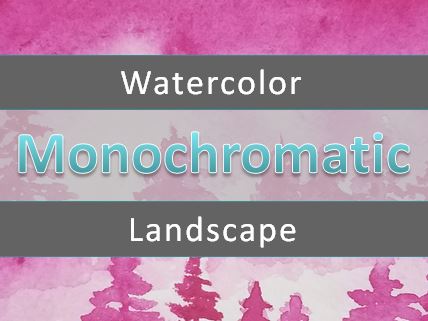Monochromatic Landscape Painting Tutorial
Today we are going to learn how to paint a monochromatic landscape using watercolors.
In January we started learning about color theory. And this month, we’ve been learning about watercolor painting and how to apply it to what we learned about color theory. Watercolor is such a fun and versatile medium to use, and it’s been around for years. Check out Famous Watercolor Artists to see the variety of techniques used throughout history.
Today I’d like to take this opportunity to bring the two together by showing you how to paint a monochromatic landscape using watercolors.
* Some of the links in this post may be affiliate links. This means I receive small commissions for purchases made through these links at no extra cost to you.
Art Supplies
Water
Tape
Board
Get Your FREE Artist Trading Cards Guide
Set Up to Paint Your Monochromatic Landscape
The first thing we need to do is tape our watercolor paper down to our board or other flat surface.
You want to make sure you are using high quality paper. The cheap stuff just doesn’t work well for this type of painting, and the colors won’t be as bright.
I use regular masking tape and I cut my paper down to make artist trading cards. You can learn more about this art form at How to Make Artist Trading Cards (ATCs).
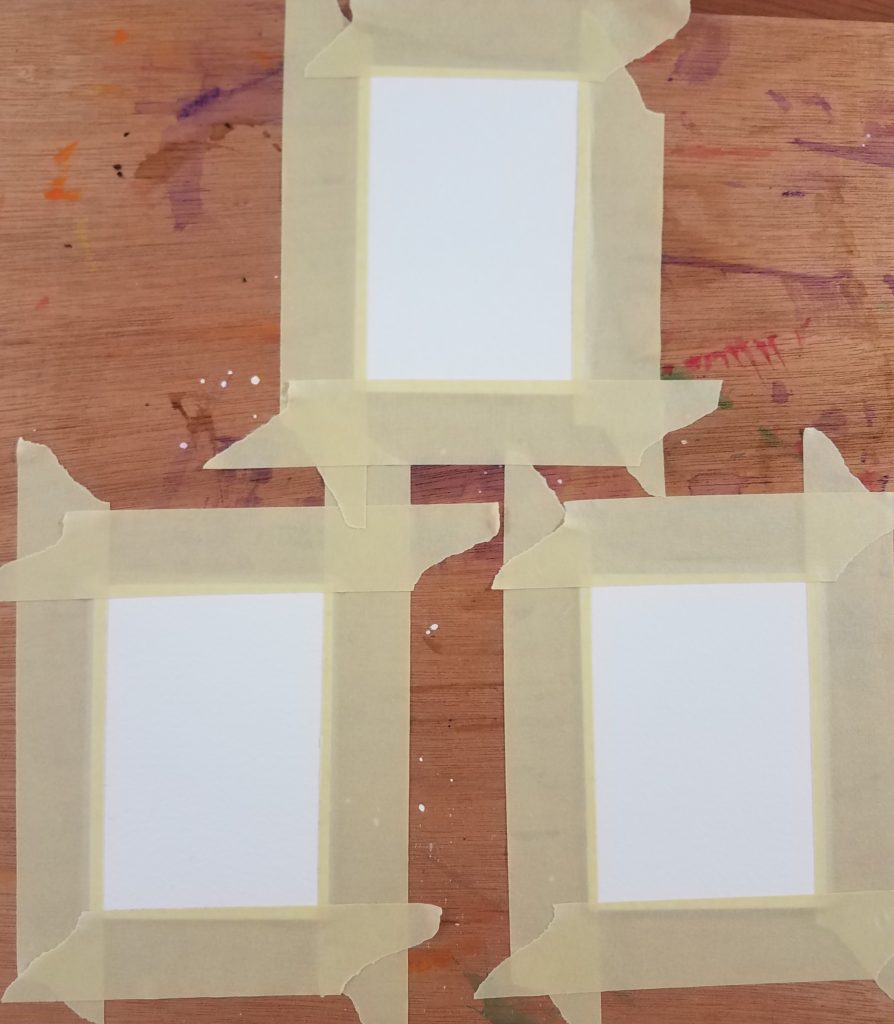
Monochromatic Color Schemes
We will be using the wet on wet technique for our monochromatic watercolor painting today. In our lesson Understanding Color Theory for Artists, we talked about the different color schemes. We also learned that monochromatic means using only one color of paint.
When using acrylic paints, you would use black and white to get a variety of tones for your color. However, with watercolors, we will be using layers to get our different values. We will also be varying the amount of water to change the values.
You can get a wide range of values by adding more or less water. And you can add layers on top of dry paint as well. This will create a darker value.
Monochromatic Watercolor Landscape
Today I’m using Prima Tropicals for my watercolor painting. This set of paints has such vibrant colors. I love how they look. You can learn more about these paints in Prima Tropicals watercolor review.
We are using a wet on wet technique so our colors can move around the paper. Begin by applying clean water to the surface of your paper.
Lightly cover the entire paper. Unless you are using a larger piece to paint on. Then you will want to work on one section at a time.
Choose your one color to work with. I went with the 22 – Sunset red color from the Prima Tropicals set. I love how this color looks.
Start adding in drops of paint towards the top and side edges of your paper. You will typically want these to be your darkest areas of your painting.
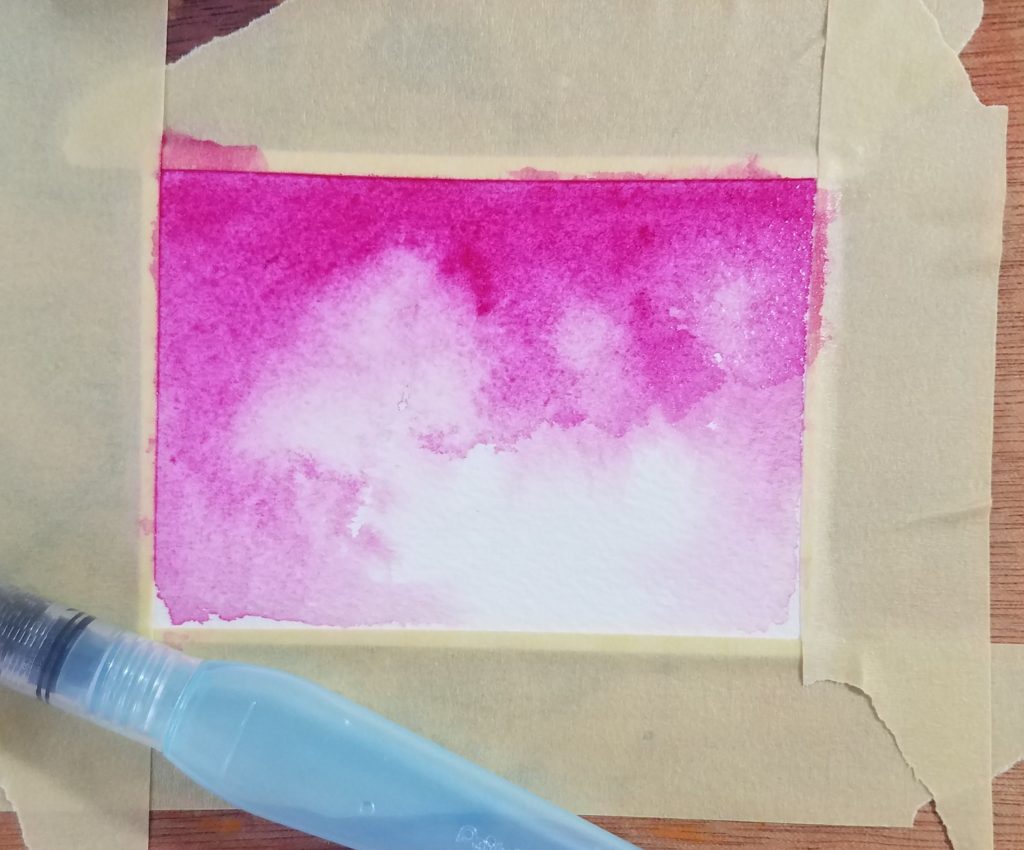
It’s fun to let the watercolors move around in the water and see what kind of shapes form. Try to get different values to make your monochromatic landscape look more interesting.
Continue to add paint until you are happy with how your background looks.
How to Get Watercolor Values
There are a few different ways to get different values with your choice of watercolor paint hue.
The first way is by varying the amount of water you’re mixing with your paint. The more water you add, the lighter your value will be.
You can also make your values darker by adding more layers of paint. To do this, allow the first layer to dry completely before adding another layer.
If you’re doing a wet on wet technique, you’ll want to put down a layer of water between each layer of paint to avoid having sharp edges.
If you need to make an area lighter, just use a paper towel and blot the area where you want to remove some paint while it’s still wet. Your watercolors will absorb into the paper towel.
You can even add some clean water on top of dried paint and lift some of the pigment. You won’t be able to lift up as much as when the paint is still wet, but you will be able to lighten it a bit.
Monochromatic Landscape – Trees
After your background is completed and dry, it’s time to add in some trees. When you paint your trees they don’t have to be too detailed. You only need an indication that they’re trees.
To paint a tree, begin by making a straight line. I usually make mine from the bottom to the top so my line will get thinner at the top and taper off.

Next, add in some branches. You don’t want your tree to be solid, so be sure to leave some space in between. The overall shape of your tree should be a triangle.
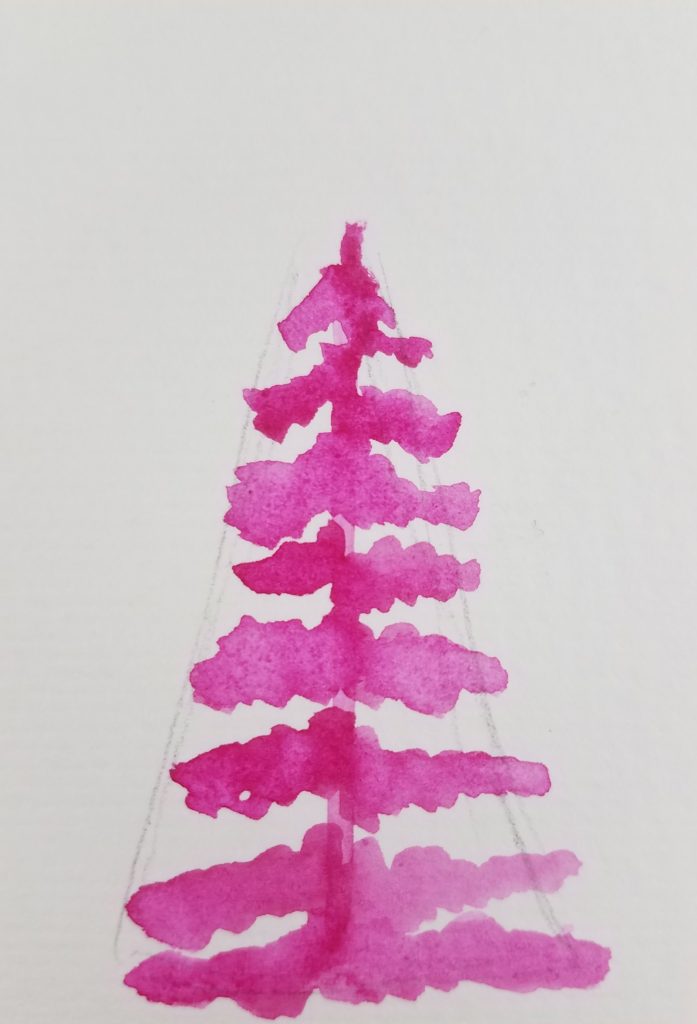
Make several trees of varying sizes. This will make your painting more interesting. You can also make the trees in the foreground bigger, and darker, to show depth.
Use a little bit of clean water at the bottom of your trees if you want to soften them up and make some foggy areas.
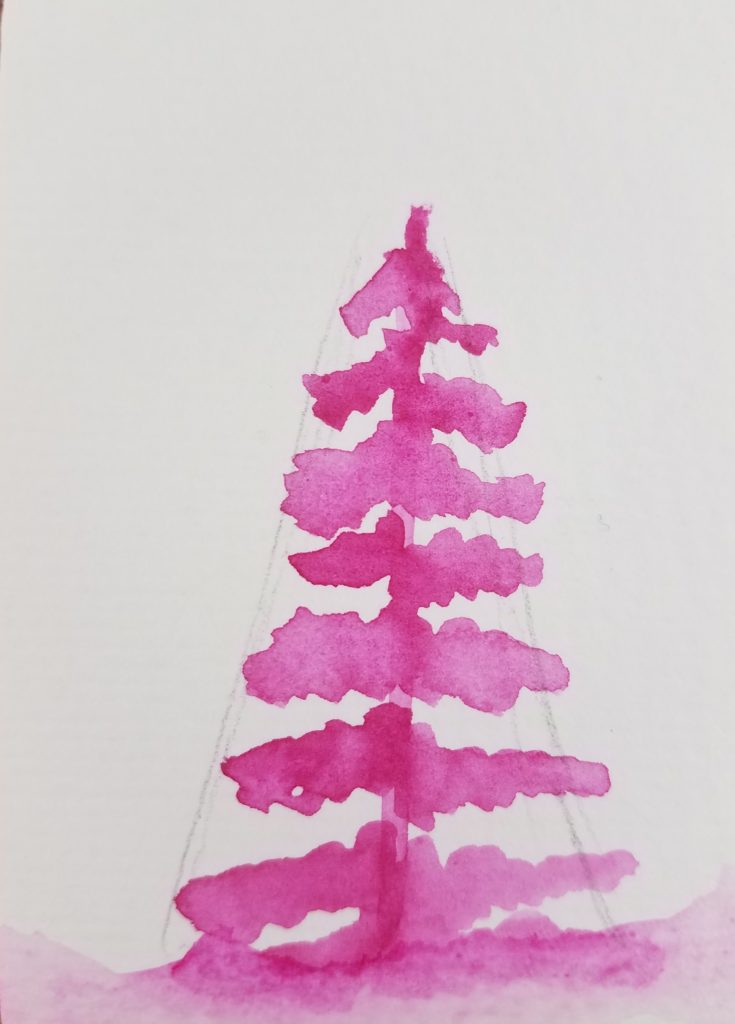
Let your paint dry, and add in some more trees to layer them on top of each other for overlap as well. If you try overlapping your trees when they are still wet, you’ll end up blending them together.
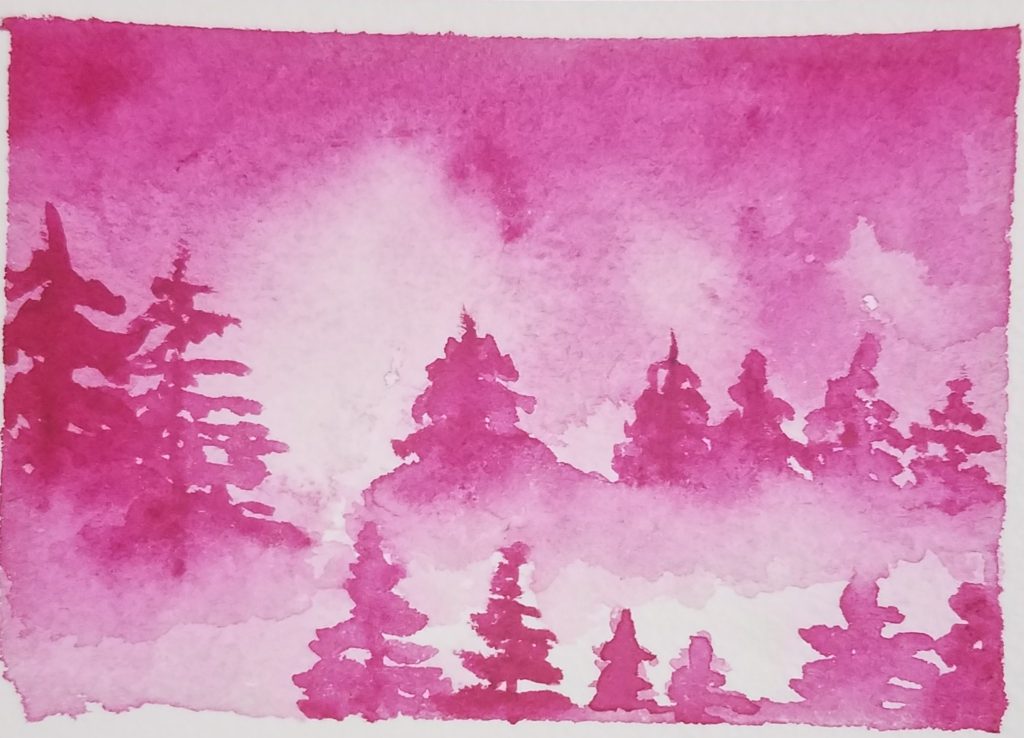
How to Paint a Monochromatic Landscape with Watercolors
That’s it. Your one color watercolor painting is complete. After your painting has dried completely, you can carefully remove the tape.
Thank you for stopping by and learning how to paint a monochromatic landscape with watercolors. I hope you feel inspired to create your own.
If you haven’t tried the Prima Tropical paints yet, order your set today and give them a try. The colors are amazing!

